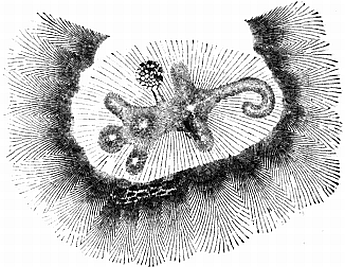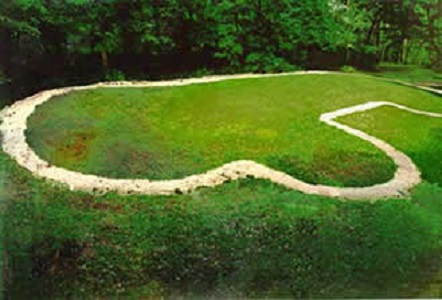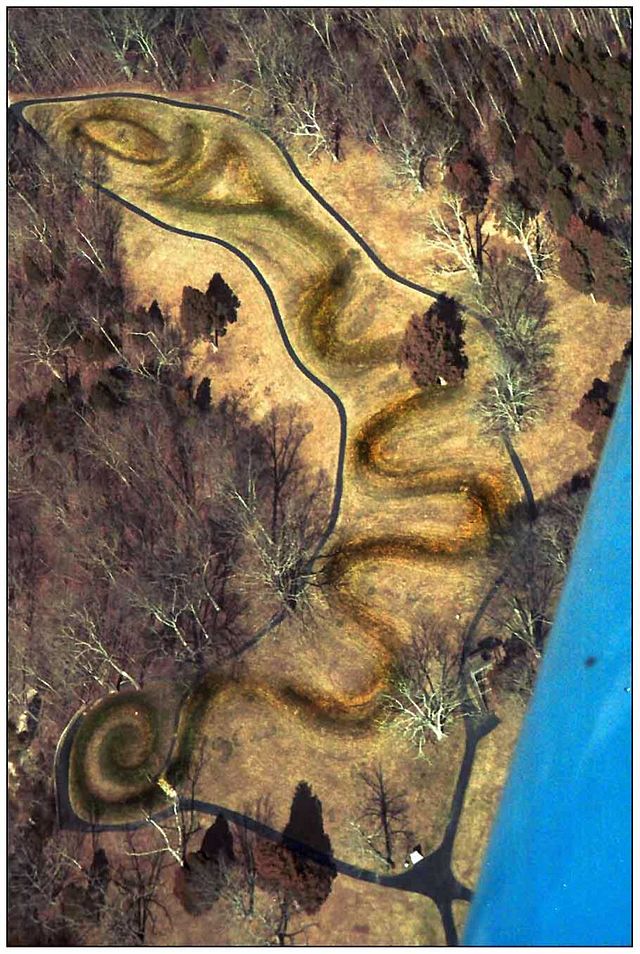Effigy Mounds Are Often Created in What Type of Shape
The colossal heads of the Olmec have which common feature. An effigy mound is a raised pile of earth built in the shape of a stylized animal symbol religious figure human or other figure.
Ancient America Effigy Mounds Native American Netroots
Animal Effigy mounds are man-made mounds of earth often created in the shapes of animals The Nazca Lines are which of the following.

. Serpent Mound the largest effigy work in the world is 1330 feet long and three-foot high. The construction of effigy mounds was a regional cultural phenomenon. The effigy mounds were usually located along the rivers or lakes.
Other mounds are abstract such as combinations of embankments with dome-shaped mounds. Their precise function though assumed to be generally ceremonial is still unknown though few effigy mounds served as burial grounds. There are also other types of mounds such as conical and linear which can be found in various other regions.
During the late Woodland period from 400 AD to 1200 AD effigy mounds began to appear. However its main use appears to be. One of an effigy mound on the University of Wisconsin-Madison campus and the other of an effigy mound being excavated.
Only a small percentage of the earthworks built by the Adena Hopewell and Fort Ancient cultures are effigy mounds or earthworks in the shape of animals and birds. Like earlier groups the Effigy Moundbuilders continued to build conical mounds for burial purposes but their burial sites lacked the trade goods of the preceding Middle. Archaeologists call it Effigy Mound culture.
Serpent Mound dates somewhat later than the Hopewell but is one of the most famous examples of a Moundbuilder earthwork. Prehistoric Native Americans built a variety of earth berm structures in addition to effigy mounds including conical linear and flat-topped mounds. Art of the Americas.
That Wisconsin effigy mound builders would make mounds that resemble elephants camels or kangarooseven if the mounds might resemble those animals to us today. Some effigies are in the form of birds bear deer spirit animals or people. The most common types of effigy mounds depicted birds bears and the long tailed creatures called panthers lizards or water creatures.
Many of the mounds have yielded. The name is inspired by the unique burial mounds constructed by the native communities of southern Wisconsin. The mound itself resides on the Serpent Mound crater plateau running along the Ohio Brush Creek in Adams County OhioThe mound is maintained through the Ohio History Connection a non profit organization dedicated to preserving.
The Effigy Moundbuilder culture is primarily associated with the years 550-1200 CE during the Late Woodland Period although radiocarbon dating has placed the origin of certain mounds as far back as 320 BCE. Two images are included. Beachcombing has long been attracted to the so called animal effigy mounds of Wisconsin Iowa Minnesota Ohio and Louisiana.
Abstract - Mounds created by North American Indian cultures about 700- 3700 years ago in the shapes of animals and humans are known today as Ef- figy Mounds. It is estimated that up to 20000 effigy mounds were created just in Wisconsin. Effigy Mounds are found in Southern Wisconsin in Allamakee.
Archaeologists believe that effigy mounds came after Hopewellian-period conical and linear mounds which were also built for burial and ceremonial purposes but. An Effigy Mound located in Chicagos Lake View neighborhood. Another moundbuilder culture there were several called the Effigy Mound Culture built effigy mounds or mounds in the shape of animals.
Effigy mounds are often created in what type of shape. 2 days agoThe Great Serpent Mound is a 1348-foot-long 411 m three-foot-high prehistoric effigy mound located in Peebles Ohio. Bear and bird effigy mounds dominate the Effigy Mounds National Monument.
Effigy mounds are sacred burial places built by Indians between 800 AD and 1000 AD. This essay gives a brief history of effigy mounds culture especially as it relates to Wisconsin. Most of the mounds are conical but about 30 are effigies in the shape of birds and bears.
Geoglyphs Nazca Lines a series of ancient geoglyphs created in the Nazca Desert of Peru. Radiocarbon dating has placed the people who built the mounds to have lived roughly between 650 1200 CE. Mounds of earth in the shapes of birds bear deer bison lynx turtle panther or water spirit are the most common images.
They are extensive earthworks made from soil usually about 3 to 7 feet high forming shapes that can be seen from overhead. The effigy mound is both a burial and a ceremonial mound. Effigy mounds are often created in what type of shape.
Across these states local Indian populations built a series of giant mounds in the shape of animals. Their rarity does not decrease the skill with which they were made. Effigy mounds are large earthworks made from soil that form.
The Nazca Lines are which of the following. One of the unexplained features of these mounds is their large proportions. Dating is almost impossibly difficult in such cases but many.
Effigy mound earthen mound in the form of an animal or bird found throughout the north-central United States. Effigy mound is a term used in the archaeology of mainly Pre-Columbian America for a large earthwork in the shape of a stylized animal symbol human or other figure and generally containing one or more human burials. Effigy mounds effigy meaning in the shape of are found in various mammal bird and reptile shapes.
The construction of effigy mounds was a regional cultural phenomenon. Effigy mounds are primary source evidence for reconstructing the lives of their creators. Effigy mounds are often created in what type of shape.
Animal Effigies and Indian Mounds June 4 2011. The effigy mounds are large earthworks constructed in the shapes of various animal or human forms. The oldest mounds have been dated to about 450 bce but the effigy mounds themselves were built by a later culture probably in 5001300 ce.
The Inca created pottery by using a cooling method. Mounds of earth in the shapes of birds bear deer bison lynx turtle panther. The shapes of the mounds intrigued Lapham and many early settlers.

Iowa Effigy Mounds National Monument U S National Park Service


Comments
Post a Comment